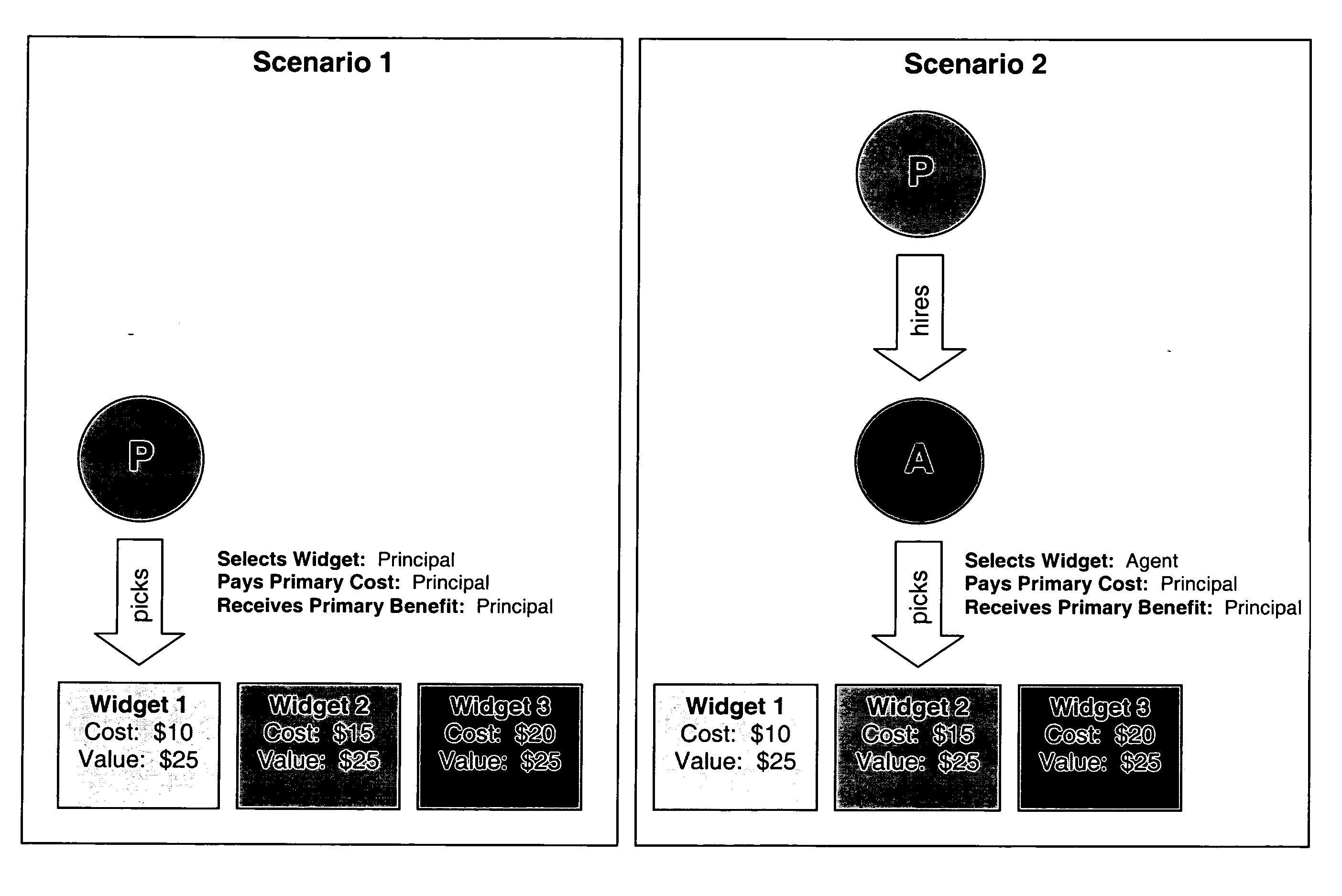Systems and/or methods for incentivizing agent-based decision-making
a technology of agent-based decision-making and system-based decision-making, which is applied in the field of systems and/or methods for incentivizing agent-based decision-making, can solve the problems of undermining the basic assumption of the principal-agent relationship, affecting the performance of agents, and affecting the quality of agents,
- Summary
- Abstract
- Description
- Claims
- Application Information
AI Technical Summary
Benefits of technology
Problems solved by technology
Method used
Image
Examples
Embodiment Construction
[0027]Certain exemplary embodiments relate to techniques for incentivizing agent-based decision-making by, for example, encouraging agents to become “true agents” of their principals by rewarding or penalizing the agents for exceeding or falling below benchmarks for specific transactions set by, or on behalf of, the principals. In particular, by setting a threshold benchmark and sharing the value of transactions that outperform the benchmark, a principal may encourage an agent to take a particular decision more aligned with its own interests. Although certain exemplary embodiments are described herein with reference to the actions, preferences, etc. of a “principal” and an “agent,” it will be appreciated that the present invention is not limited only to the strict legal definitions of the same.
1. Introduction to Exemplary Techniques
[0028]Returning to the above example scenarios and with further reference to FIG. 2, the nature and character of a benchmark-driven incentive scheme in a...
PUM
 Login to View More
Login to View More Abstract
Description
Claims
Application Information
 Login to View More
Login to View More - R&D
- Intellectual Property
- Life Sciences
- Materials
- Tech Scout
- Unparalleled Data Quality
- Higher Quality Content
- 60% Fewer Hallucinations
Browse by: Latest US Patents, China's latest patents, Technical Efficacy Thesaurus, Application Domain, Technology Topic, Popular Technical Reports.
© 2025 PatSnap. All rights reserved.Legal|Privacy policy|Modern Slavery Act Transparency Statement|Sitemap|About US| Contact US: help@patsnap.com



